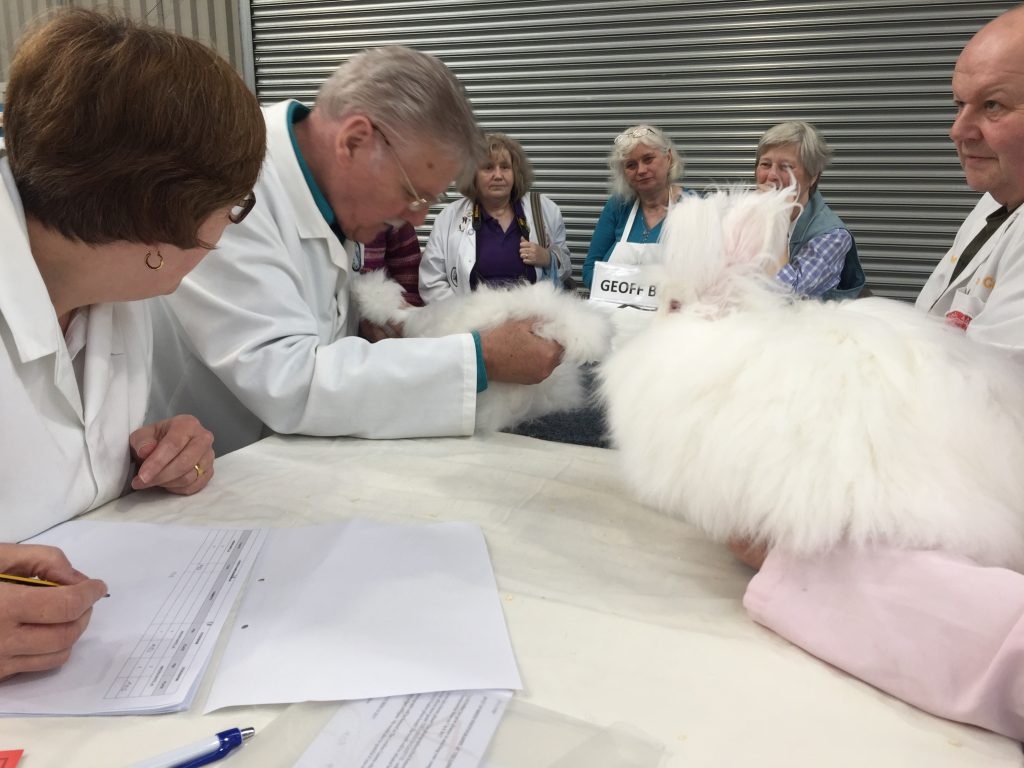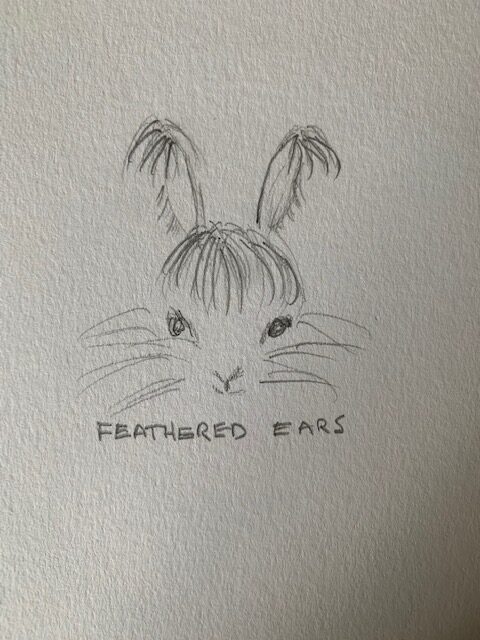
A judges lot is not a happy one, it doesn’t matter what decision a judge makes someone will disagree with it. Usually very vocally! I received some very sage advice on the eve of my first judging engagement, when expressing nervousness to a long-time judge – “you don’t have to worry about the one that wins, its the one that comes second is dangerous”
A judge comes in for a lot of stick, but on the day he or she’s decision is final – no matter how much you the exhibitor may disagree with it! Having stood on both sides of the table, I can see the situation from both sides, but have learnt one indisputable fact – you cannot judge a rabbit properly unless you handle it. This I would imagine is true of all breeds, but to an even greater degree with regard to the angora. Because there are so many different points to consider, not only on the rabbit itself, but the presentation and grooming carried out by the owner!
First, read your standard, thoroughly, then read it again, then go and look at other peoples rabbits – the best place of course is a stock show. Talk to breeders who have specialised in particular colours, learn how to interpret the the standard. Please do not take umbrage when advice is offered – and to those who offer advice, please qualify it. It is not good enough to say “thats a lousy colour”. It may be a lousy colour, but the texture of the wool may be excellent – so say so along with the criticism and say how to put the defect right!
So, lets take a look at our breed standard and how the points are awarded. Out of a possible 100 points, over half – 55- are awarded to the coat, 30 of those to the texture alone. Feel a piece of cotton wool then feel some silk tops (there will be some on the angora stand to feel). An angoras coat should be more like the silk than cotton wool – hence the expression ‘silky’. So the coat should have a silky feel and be slightly crimped (a waviness along the fibre itself) – a gentle wave not excessively tight like some breeds of sheep – again there will be examples on our stand. The fibres should be lustrous – that is to say a dull shine -fold the fibres over a finger and note the the way the fibres catch the light as they move. A dull coat is not a healthy one. The single most important factor when judging an angora is the texture of the coat.

Next, 25 points are awarded to quantity and length. The denser the coat the better. I have found coats in the main fall into two categories – very long coats tend to be slightly silkier and more lustrous and very dense coats are shorter. Whatever type of coat, it should possess a wealth of tips that wave when when the judge presents the rabbit by bringing the coat upwards from the rear.

Only 10 points are awarded to the furnishings on the ears and the shape of the head. The head should be broad and flat from nose to crown, the furnishings on the ears should be plentiful and thick on the ends of the ears, and possibly feathered down the sides of the ears. The ears should be short compared to the length and size of the head and not look like ‘flag poles’!


Another important consideration is body shape or ‘type’ as it is more often referred to. An angora should have a short back and sit as a tight cob – you will all know the expression ‘cobby’ so that when the rabbit is presented it will form a circle when in coat

5 points are awarded to the feet which should be thickly covered with long wool, which on the from feet should extend right up into the chest wool Very often there is a bald patch between the toes and the chest! The chest wool is awarded 10 points. It should dome out from under the chin well covering the feet and then sweep round, full and thick to come out in a circle to meet the coat at the sides.
It should go without saying that the rabbit should be clean – no ‘yellow urine stains’ anywhere on the rabbit. A healthy well groomed rabbit will earn you 10 points. Well-groomed means no knots or matts or webbing anywhere on the rabbit. Webbing is often found on the inside of the back and front legs, around the tail area, and behind the ears. I like to be able to see to the skin of a rabbit, not just on the top coat.
The guard hairs (the stiffer slightly longer hairs in the top coat) should be in tact and should wave above the top of the coat like a cloud.
5 points are deducted from quality and quantity of the wool from the white standard (I.e for coloureds – 25 points instead of 30 for texture, 20 instead of 25 for length) and 10 points are given for the colour.
Our standard is giving the best case scenario.
Coloured angora to be a uniform shade, from the tips to the skin is desired. Desired is the key word here and it can be overlooked! Here ‘Banding’ comes to mind. Because of the dilution factor a solid uniform colour in an angoras coat is very difficult to obtain. As the coat grows the colour in the tip extends down the hair shaft generally growing paler towards the base, so that when the next coat grows through it shows up as a darker band because the colour is concentrated in the tip, and so on as the coat grows. This means that the ‘banding’ could be a paler version of the main colour but not white!
A rabbit with the more solid colour would be the winner.
The agouti however have distinct colour bands within one hair shaft and are therefore viewed differently.
It is best therefore to come to a stock show and watch the judge, ask questions after judging if you can and talk to other breeders about the colours .
Judging the Angora Rabbit by Lesley Taylor Year book 1994 (abridged)